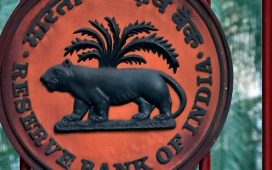“The new tax regime has left more money in the hands of the taxpayer. Over and above what he pays as tax, the money that is left in his hand are him to decide what to do with it. Why should I underestimate the decision-making ability of the householder – who takes care of family, runs his family takes care of the future interest of household – saying if you put your money here I incentivize you to do it but you may not want to put there because I may not given any incentive,” Sitharaman said.
She was addressing the media after the customary post-Budget meeting with the Central Board of Directors of the Reserve Bank of India.
“The person who runs his family is wise enough to to know where he has to put his money. Where he will save, insure …it is up to him to decide. It is not necessary for the government to induce such measures. I have not discouraged him to to anything. It is for him to take a call,” the finance minister added.
In the Budget, the government announced that persons in the new tax regime with income up to Rs 7 lakh will not have to pay any tax. Currently, it is Rs 5 lakh under both the old and new tax regime.
To further incentivize the salaried class taxpayer to switch to new tax regime where no deductions on investments is provided, the finance minister allowed a standard deduction of Rs 50,000 under the new regime. In other words, salaried individuals with total income of up to ?7.5 lakh will not have to pay any tax under the new tax regime.
The government in the Budget had also announced a change in the tax structure in the new tax regime by reducing the number of slabs to five and increasing the tax exemption limit to Rs 3 lakh.Under the new tax slabs in the new tax regime, those earning up to Rs 3 lakh pay zero tax, Rs 3-6 lakh 5%, Rs 6-9 lakh 10%, Rs 9-12 lakh 15%, Rs 12-15 lakh pay 20% and those above Rs 15 lakh 30%.









